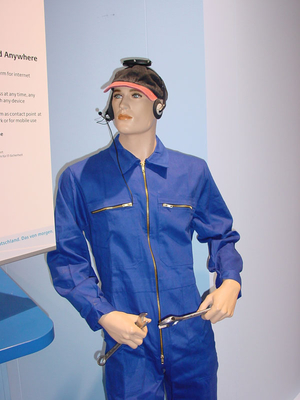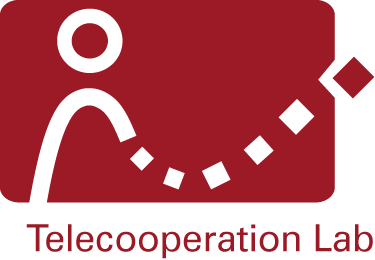
The vision of the future ubiquitous computing world is very attractive. Computers have become interwoven with our everyday environment and we use them naturally, without even noticing that they are there. However, to use such an infrastructure, we still need a way of interacting with the ubiquitous devices. Interacting with the infrastructure is likely to happen in an unobtrusive manner; this calls for investigating methods and devices for interacting with such an ubiquitous infrastructure. The Talking Assistant is the prototype of such an interaction device.
The Talking Assistant is part of our Mundo project which aims at investigating and prototyping ubiquitous computing infrastructures. It fulfills two critical functions. First, the Talking Assistant acts as the user's representative in the digital world. By this we mean that the Talking Assistant carries the user's digital identity and is able to perform operations such as authenticating the user to other parties. We believe that interaction with the ubiquitous infrastructure will mainly happen through a personal device, owned by each user. This is because it will represent the user in the digital world and carry out transactions, sometimes with only implicit consent of the user. Hence, it is vital that a user is able to trust the device carrying out these actions. The easiest way to instill this trust in users is to have them actually own the device instead of relying on a networked service, which may remain an abstract concept for many users.
Second, the Talking Assistant plays a role as an interface device for interacting with the computers and services of the world. By itself the Talking Assistant has only minimal processing, storage, and interaction capabilities, but it can boost them by using services that are deployed in the infrastructure. This way, we can keep the device small (both in terms of size and power consumption), offer basic services in all situations, and offer enhanced services when connected to a network. Should network connectivity not be available, the Talking Assistant must still be capable of providing a minimal functionality.
The Talking Assistant device comprises two parts: the headset and a small box. CPU, WLAN card and battery are located in the box. The headset consists of a headphone, microphone and a number of sensors. In our current prototype version, the user wears the headset on her head and wears the box on her belt. Because the headset only contains a few sensors, it is no more cumbersome to wear than a standard headset without any sensors. The sensors are used for determining the position of the mobile user in space and capturing the head orientation in all three rotational axes.
Funding
- The Talking Assistant is part of the Mundo project.
Former Project Member
- Dr. Erwin Aitenbichler
Contact:
- Prof. Dr. Max Mühlhäuser



